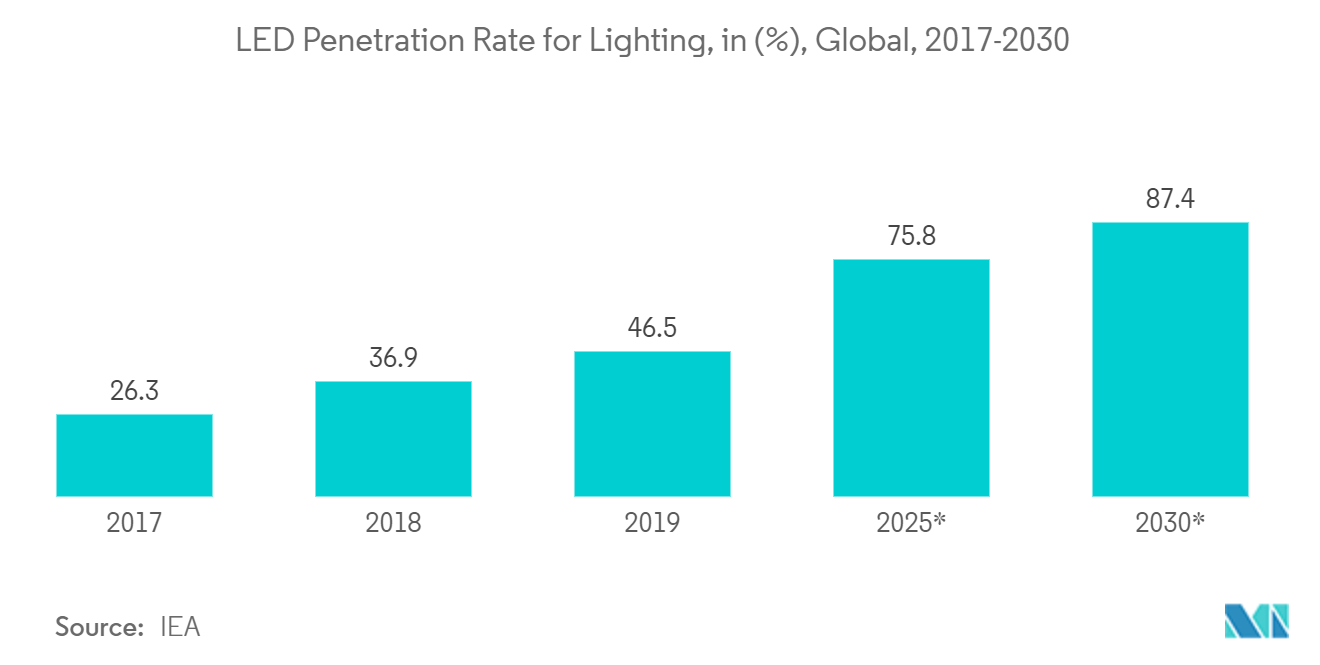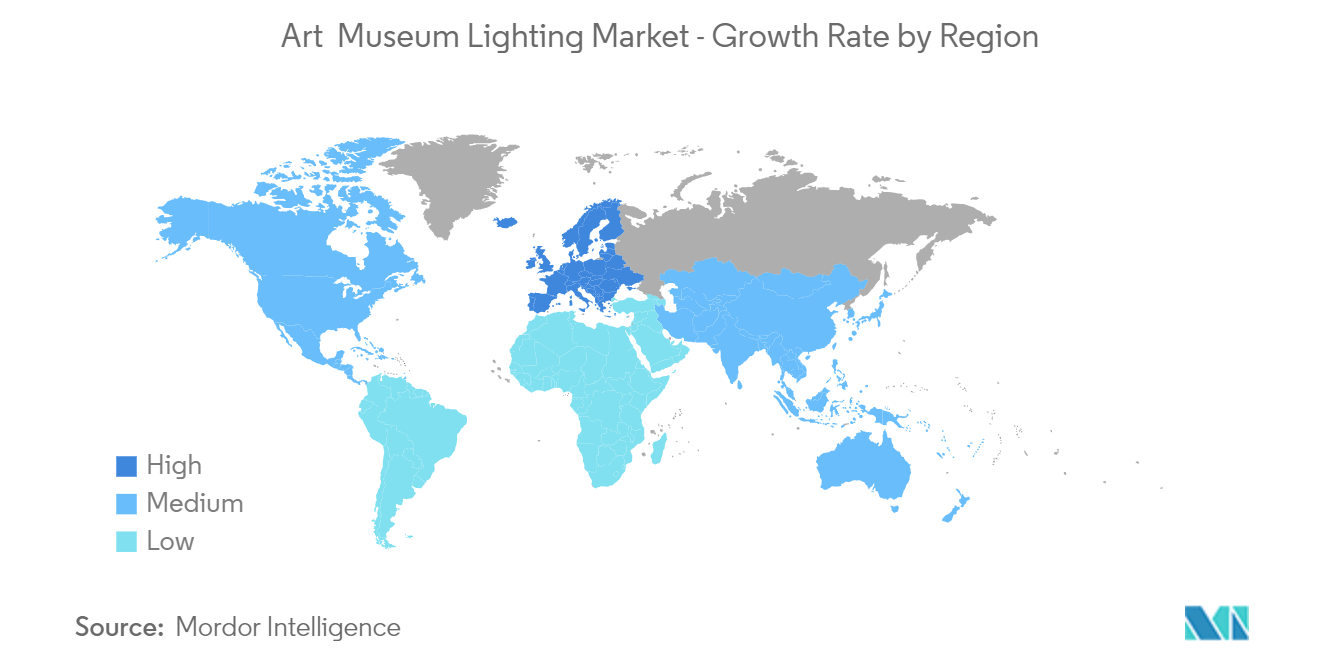Market Trends of Art & Museum Lighting Industry
LED Segment is Expected to Drive the Growth of the Market
- Lighting up museums and art galleries well is crucial. Light helps draw attention to artwork while preventing damage to the work itself. These two imperatives often conflict, as exposing artwork to a source of intense light can periodically affect its quality. According to IEA, as more and more countries are getting close to phasing out conventional bulbs, LEDs are continuing their march to the top of the Market. The penetration rate of LEDs into the global lighting market is expected to reach a penetration of 76% in 2025 and a further 87.4% in 2030.
- Consequently, there is a need for a lighting solution that enables optimal visual appreciation of the art and ensures that its characteristics are not tainted. As a result, LED luminaires have emerged as the preferred lighting solution in museums and art galleries. Light-emitting diode (LED) lamps are increasingly replacing the incandescent and fluorescent lamps used by museums and art galleries for decades. Of all the advantages of the LED, its duration is the most significant. LEDs can have a 25,000+ hours lifetime compared to their traditional counterparts, translating to approximately ten years of museum and art gallery visiting hours.
- The growing consumer awareness about the environment and the durability of electric lights, along with the government mandates for energy efficiency, are the drivers for the increasing adoption of LEDs. Modern LED lighting solutions are advancing rapidly as they deliver significant energy-saving potential. Increasing efficacy, optimized luminaire design, and flexible lighting control enable enhanced performance at a lower cost for different lighting and traffic conditions.
- The interior artificial light sources of the museum and art galleries include incandescent, halogen, fiber optics, fluorescent, cold cathode, and LEDs. Incandescent lamps are generally used for ambient and accent lighting with track luminaires. However, by discontinuing most halogen light sources, most art galleries replaced their current stock of gallery luminaires with new LED luminaires without the need to change their existing electrical infrastructure and lighting controls. LED luminaires have also reduced electric costs significantly.
- Moreover, LED lighting technology is very energy-efficient and can drastically impact the future of lighting in the United States. The widespread adoption of LED lighting has a significant potential impact on American energy savings. By 2035, it's predicted that most lighting installations will be LED-based. According to US DOE, Energy savings from LED lighting might reach 569 TWh annually by 2035, equivalent to the yearly energy production of over 921,000-megawatt power plants.

Europe is Expected to Experience Significant Growth
- Due to growing environmental concerns and the adoption of light-emitting diode (LED) lighting systems across industries, the EU market is anticipated to dominate the LED lighting market with a sizeable share. LED-based lights are preferable to conventional lighting technologies because they are more energy-efficient, have a longer lifespan, and require less electricity to operate. Europe is one of the world's most inventive lighting marketplaces as the lighting industry transitions to solid-state lighting and LED sources.
- In order to boost consumer adoption of LED products and phase out older, less efficient technologies, the regional governments are also offering subsidies and incentives. This will enhance the overall efficiency of the European lighting industry. For instance, EU Green Lights funded a EUR100M Subsidy for Italian Olive Millers in October 2022. According to the Italian Ministry of Agriculture, Food, and Forestry, the new subsidies will fund initiatives that use less energy and have a minor environmental impact.
- At COP 26, the EU committed to reducing emissions by at least 55% by 2030 to become the first area to achieve climate neutrality by 2050. As a result, the move to phase out fluorescent lamps is growing in importance and can be done for a direct societal benefit. With the United Nations Minamata Convention on Mercury, such decisions will assist the EU in accelerating the switch to energy-efficient, clean LED lighting.
- LED illumination enables operating optimization without sacrificing viewing pleasure or art preservation. Since Europe is home to seventeen of the largest museums in the world—seven of them are in London, three are in Paris, Madrid, and Barcelona, two are in Rome, and one in each in Florence and Rome—it presents a substantial growth opportunity for the LED market. Such factors can create a demand for LED lighting in public places such as Art and Museums.
- With The rise in the usage of LEDs and the stricter rules for the marine industry concerning safety lights, the growing demand for energy-efficient lighting will drive the Market. For instance, in November 2022, the European Commission recently announced an additional EUR 10 million for a project to lower the greenhouse gas (GHG) emissions from international shipping in the margins of COP27.
- Additionally, the changing regulations for energy efficiency requirements and other factors for almost all lamps sold in Europe, such as bulb lifetime and warm-up time, are anticipated to fuel the Market. According to the latest regulation, most halogen lamps and traditional fluorescent tube lighting will be phased out from September 2023 onwards.

